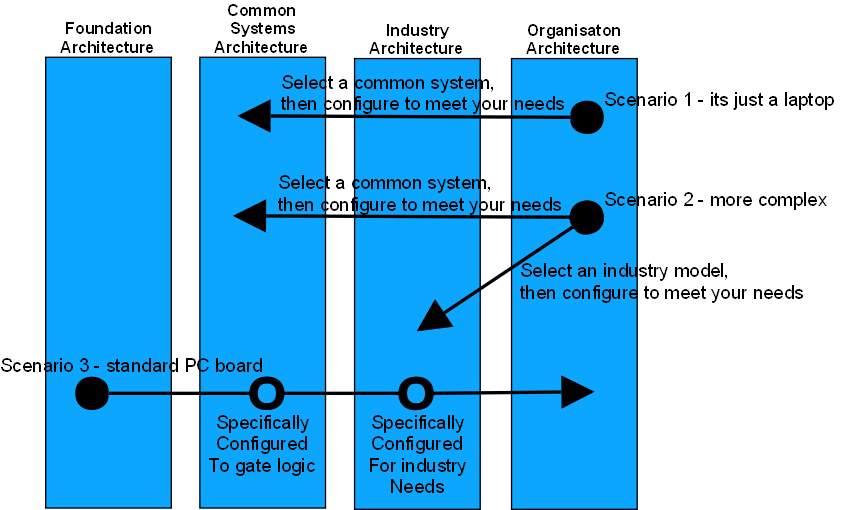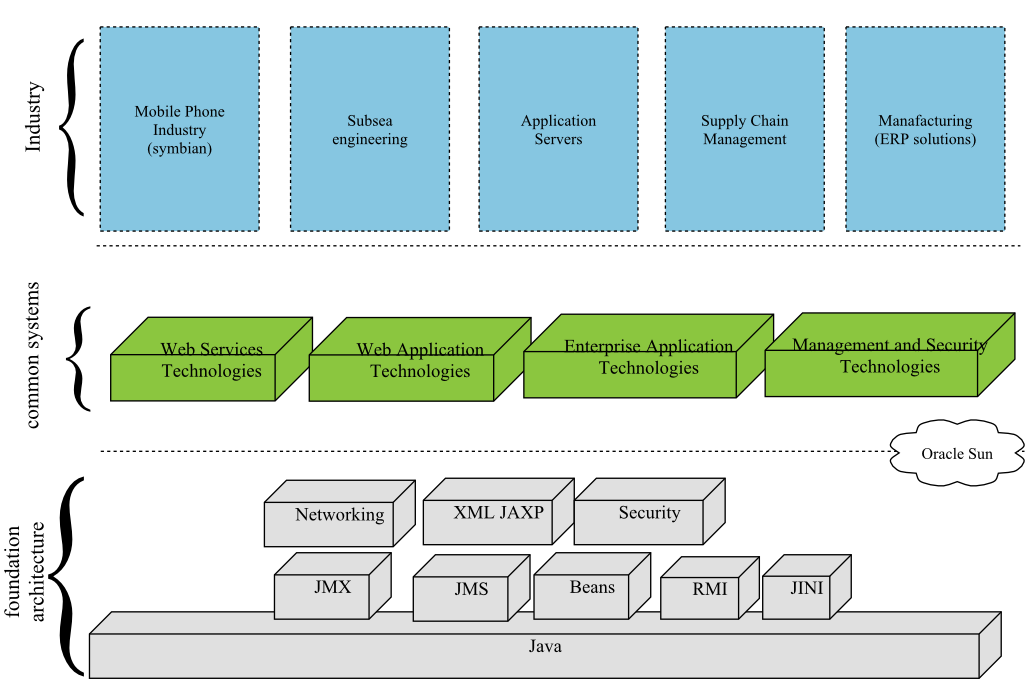Enterprise Continuum
Let me begin by describing a number of problem scenarios in which I would like you to pick a possible solution to the problem (there is no definitive answer just degrees of accuracy).
Scenario 1: Your organisation has a number of computers, PCs and laptops. The laptops have been specially configured to meet your organisation's needs. The configurations consist of a set of security modules, encryption modules, specialist modelling applications and some office products. The hardware has been augmented to enhance the security features on the machines.
Question: can this configurations be purchased on the mass market?
Answer: well, it depends on how you see things! Is it a standard laptop with specialist hardware and software tacked onto it, or is it a specialist laptop? It's a standard laptop as described in the opening sentence. So it's a common system architecture that has been configured specifically for your organisation.
Scenario 2: Many years ago your organisation had a custom made CRM system. It's lasted well but now lacks the ability to grow with the business. It stores data in a proprietary manner even though it is using a relational database for its persistence strategy. It's been suggested to your organisation that there are COTS CRM packages available that can deliver everything you currently get from the bespoke application, but at a cost as would continuing to develop the bespoke CRM!
Question: do you accept the fact that there are COTS packages in the market that can be procured and used to deliver the current bespoke CRM, or do you continue to retain the ownership of a piece of bespoke technology?
Answer: The COTS would be beneficial as it de-risks the whole model but there is a cost associated with such a product. You also have to up skill in the new product but, you can quite possibly purchase this product's skills on the open market. The other issue is that you loose control over the development life cycle of the product. If you decide to maintain the bespoke model then there are different costs of ownership that must be considered: you have to maintain the skills required to maintain and develop the application, and it may not integrate well with other applications on the open market etc. It's all about perspectives, the levels of abstraction you choose the draw.
Scenario 3: Your in an organisation that is developing the ticket gates for a mass transit system. In the past your organisation has developed very specific hardware to handle these gates.
Question: You now have a choice. Continue in the fashion that you have grown accustomed to, or use an industry standard piece of hardware and configure it to suit your needs?
Answer: Use a standard hardware architecture like an intel 486 architecture overlaid with PC architecture features, but configure the architecture to suit your specific needs. This de-risks, reduces overall cost of ownership, simplifies the design and build process and maximises the reuse of industry components.
Viewing the scenarios through the lenses of the Enterprise Continuum
JEE Viewed through the lense of Enterprise Continuum
Here we have taken the opportunity to see what would happen if we tried to map the JEE architecture to the Enterprise Continuum.
Notice how we've aligned specific Java elements to specific sections in the EC. A foundation architecture is a basic building block, one that you don't wish to decompose any further. A common systems architecture is a common pattern that can be applied in any industry.

